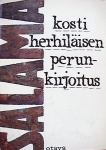(Urban space / soc. categories) Pamgol in Sillim 10-tong
| Chosun Ilbo continues reporting on taltongne or poor neighborhoods; this time in so-called pamgol in Sillim 10-dong ( dong locationin Hanmir map search), on which a long series of reports have appeared in the last few days. (The whole project on poor neighborhoods is a part of a larger project of Uri iut, literally "Our Neighbors", in the figurative sense. This Pamgol in Sillim 10-dong, which is actually quite close to my own Seoul neighborhood in Sillim 2-dong, is something I haven't heard of before. 10-dong is situated behind Sillim 6-tong; for example that's where the apartment block on the top of the hill built around 2000 is. (" Last resort of 1000 evictees") (Chosun) Pamgol is said to have appeared as a consequence of removal of evictees in late 1960s; the article doesn't say it, but I think it was most likely so that people were loaded into trucks and taken here, as was done in many other cases of taltongnes. In Pamgol, 180 families (kagu) and 500 persons are living in 120 houses (chut'aek). Pamgol is depicted as "still" having the 60s-70s poor neighborhood scenery as such; "these are alleys where rice-cooking smoke is rising from a fireplace, lights are lit as the evening falls an sweet smell of rice is in the air"; "one can still see fireplaces (agungi) for cooking rice built out in the alley, fired with board pieces and paper. Chosun emphasizes the private volunteer help in resolving the poverty problem. In "Have you seen how your neighbor lives", a welfare institute researcher is quoted as saying that donating needs to become a normal (ilsanghwa) activity, and that for the safety of the community, donating by those who have (kajin saramdŭl) is the minimum responsibility. Above, it is pointed out that 52% percent of Koreans donated money in 2003, as compared to 57% in 2000, and 89% of US families.  Picture from Chosun Ilbo Finally, in "I didn't know there's place like this next door", Chosun tells how its reports have generated response from readers, who have been contacting the paper and offering their help, from "Kangnam housewives" to "woman living on welfare (kich'osaenghwalsugŭpcharo saraganŭn ajumŏni)". Taejin, who was not being able to enter high school because of lack of money, has been promised support for all the 3 years. Four women in their forties living in the neighboring apartment blocks provided 20 bags of kimchi, which they had made in the ward (ku) volunteer event. That kimchi run out soon, and they went home and brought their own; that made them realize what was the difference between giving kimchi of their own and that made in the event. "Giving one's own was real giving and volunteering." In addition to that, let's add what Hankyoreh tells about the new government policies on the subject: certain ministries and welfare organizations have drafted a "Five-year participatory (ch'amyŏ) welfare plan", which is to raise living standards, increase the number of recipients of "basic living support" or whatever the kich'osaenhwalpojang is called, and increase the maternity allowance from the present monthly 300 000 won to 40% of the wage by 2008. Housing support for a 4-person family will be extended to those with less than 29 sq.m of living space or less than 2 bedrooms. 계획안은 지난해 설정한 최거주거기준인 4인가구 기준 8.7평 이상, 침실 2개 확보에 미달한 가구에 대해 정부 지원으로 주거환경을 대폭 개선하기로 했다. 또 이들에겐 주거유지 급여가 지급된다. 현재 최저주거기준에 미달하는 저소득층의 비율은 전국민의 23%에 달하고 있다. 이와함께 2013년까지 국민임대주택 100만호를 건설해 장기공공임대주택의 재고를 현 3.4%에서 10.0%로 늘릴 계획이다. Chosun also reported this plan, telling also that there will be enforcement of statutes allowing forced levy of living support from offspring who are refusing their legally obligatory maintenance of parents; this has been a legally defined measure, but enforcement has not been succesful. (지난 2001년 경기 안양 등 일부 지자체가 구상권 행사에 나섰으나, 대상자들이 강하게 반발, 사실상 실패했다.) Ch'amyô pokchi or "participatory welfare" comes of course from the signboard of the present administration, ch'amyô chôngbu or "participatory government" (the official English form in Korean must be a bit different); cannot say for sure if it's an addition to or a readjustment of the previous government's "productive welfare" (saengsanjôk pokchi). Categories at del.icio.us/hunjang: stratification • housing • cities • Koreanpolitics |


Comments to note "(Urban space / soc. categories) Pamgol in Sillim 10-tong" (Comments to posts older than 14 days are moderated)
Write a Comment